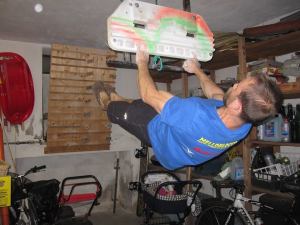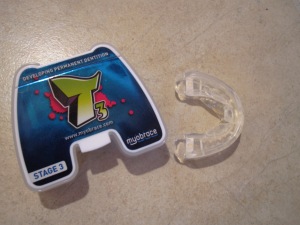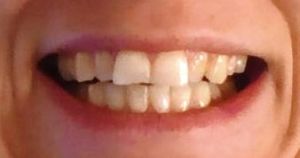Judging from the comments on my blog, I’m not the only one who doesn’t trust dentists 100%. More than once, I’ve been to several dentists for dental examinations just to see if they come to similar conclusions. I have never found that they do and when confronting them, I have even experienced that they refuse to provide me or another clinic with the patient notes. (Yes, I know that they are legally required to do so, but it’s not the first time I have found that the main purpose of regulations in this field seem to be to enhance public trust in the profession, not to actually protect individuals). The damage that dentists have done to my health, coupled with the painfully acquired knowledge of my complete powerlessness as a patient after that damage was done, have obviously made me much more suspicious towards dentists than what you’d expect from someone who is otherwise skeptical towards conspiracy theories of all kinds. Thus, when my dentist (the one I trust the most: one in Italy that I have been going to for years) found two cavities “due to the absence of flossing” that he could repair “for the price of one” just after hearing me mention that recent studies have found that although flossing has been recommended for decades, there aren’t actually reliable studies showing beneficial results…I wasn’t prepared to book in a visit to drill and fill before having a second opinion. I am actually one of those people who floss daily, as I have experienced such debilitating tooth ache that I am prepared to do anything to prevent caries even if it doesn’t have any proven effect, as long as it can’t do any harm. This made me curious to find out whether it was just a funny coincidence that this dentist found a cavity between the teeth of an avid flosser just after hearing her complain about the scientific evidence supporting its effect, or if it might have been the case that he saw an opportunity to book in a lucrative appointment. Of course I realize that in this case (just like for most conspiracy theories), I couldn’t disprove that I had become too paranoid or prove that the dentist was dishonest, but by seeking a second opinion, I could make myself more confident that no unnecessary drilling was done.
Thus, I was delighted when I was offered the opportunity – four months later – to try out a dental examination at a Swedish clinic (Aqua Dental) free of charge in return for an honest review. (Well, the annual contribution from the state was used up, but I will get the rest back). Note that no one at Aqua Dental knew of this blog when offering me this opportunity – they searched for interested people via Facebook and I applied. Although this post is also an honest review, it is not the one I had to complete for the refund. Also, the dentist did not know that I was one of the people trying out Aqua Dental for free, but she might of course have guessed.
The examination at Aqua Dental felt thorough and the dentist competent and reliable. She found no cavities large enough to require drilling. When I told her about the exam in Italy, she said that I have several small cavities but that it is better to leave them, as they progress slowly and may even heal by themselves. She said she’d tell me exactly where those small cavities were, but in the end, we both forgot. I really can’t blame her for forgetting, as I kept asking questions and also forgot about it myself. Clearly, she could have been able to earn more money by telling me that I needed to have those cavities filled – her examination was thorough enough to ensure that she could not possibly have missed them – but she didn’t. (The reason I’m mentioning that is that I once had a ridiculously quick (but full price) examination done during which no cavities were found, and shortly after, another dentist found several during a much less rushed exam). She also removed some tartar without charging any extra, as she said it was too little to require a visit to a dental hygienist. Followers of this blog have probably realized that I’m not an easy patient, that I ask a lot of questions and cannot stand dentists who think that their training means they don’t need to listen to their patients to understand each individual case. In that respect, too, this dentist was ideal – she patiently answered all my questions, provided plenty of information and clearly took everything I said into consideration when suggesting how to move forward. The examination was more expensive than most of the ones I have had previously (my dentist in Italy doesn’t even charge for it!), but if paying more for that means I can avoid unnecessary (and costly!) drilling, it is well worth it!
Although this is not directly related to the bigger problem of regaining a functional bite, I thought this would be a good place to write a review, as trust in dentists has been a recurring theme here for obvious reasons: it was a dentist who ruined my bite, causing enormous biomechanical problems that I have had to live with ever since. As patients without training in dentistry, we are extremely vulnerable and easy targets for dentists who are only interested in money – there is no easy way of distinguishing them from the ones who care about their patients’ health. Second opinions are expensive and don’t offer any guarantee. I know that some dentists argue that early treatment can prevent more serious damage and that others think it is better to wait and see, as small cavities can heal, but dentistry shouldn’t be entirely arbitrary. I will never know whether the Italian dentist sincerely thought that having those small cavities filled would have been better for me, or whether he just wanted to make sure that he got paid for his time (in Italy, dental exams are free, which I think is a bad idea if you want to avoid unnecessary treatment). Likewise, I will never know whether the Swedish dentist decided not to recommend treatment of my small cavities just to give me the news she knew I would have loved to hear, or whether she would have made the same judgment had she not been aware that some patients were there to judge her and send a review to her employer. All I can do is give both the benefit of a doubt, and conclude that I wish I could always get a second opinion without having to spend a fortune.
I’m curious to read about other people’s experiences, especially if you have gone to several dentists to get more opinions on the same diagnosis!




